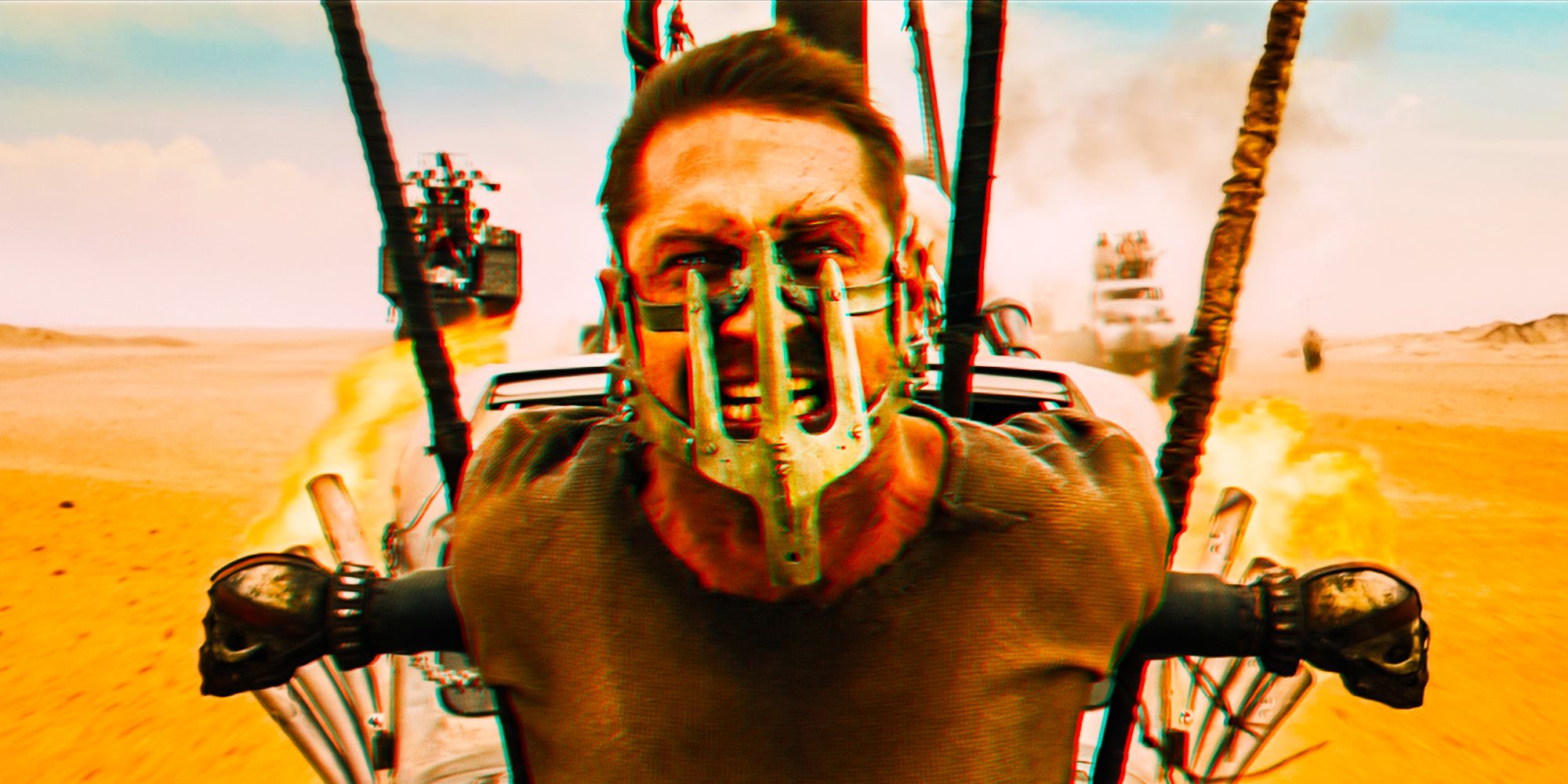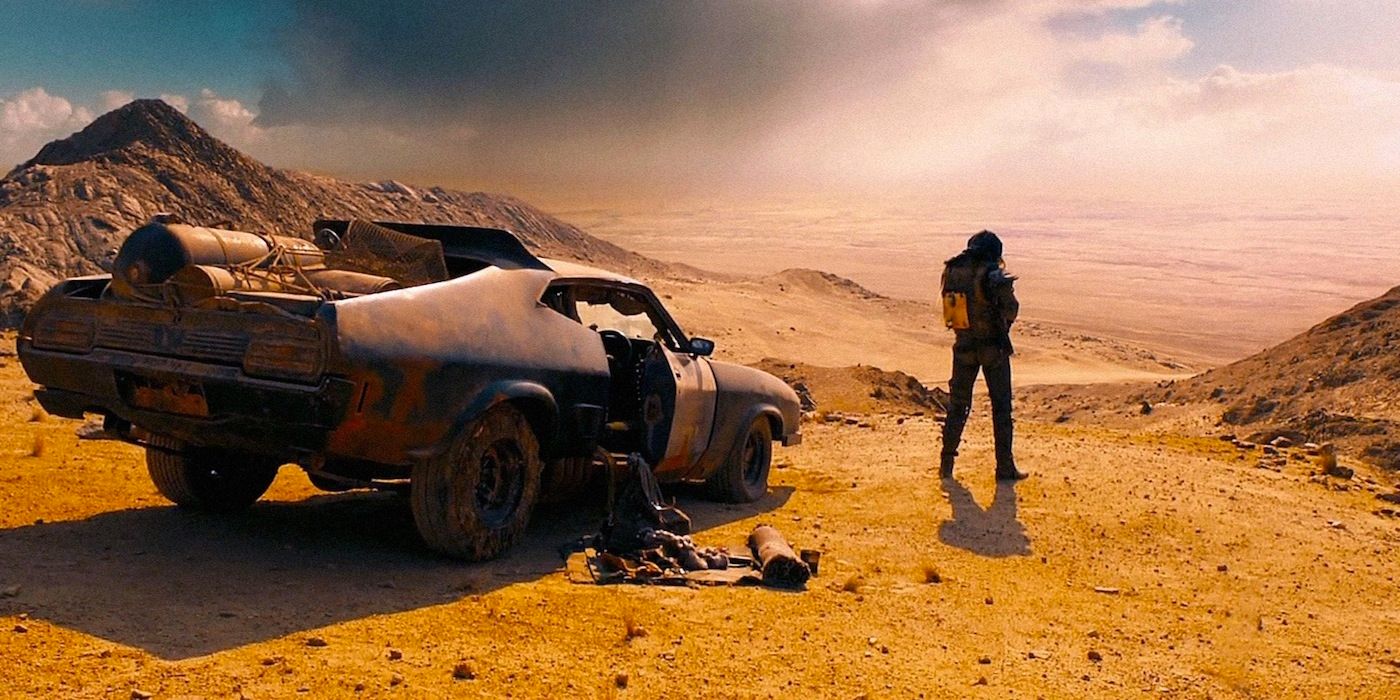
The creators of Mad Max: Fury Road originally wanted the movie to be shot in 3D, but this would have been the kiss of death for the ambitious action spectacular. The Mad Max franchise has had a lot of great ideas over the years, but the sci-fi series has also avoided some serious pitfalls. While 2015’s belated sequel Fury Road was critically acclaimed upon its release, one of the earliest drafts of the Mad Max sequel was a bizarre adventure that saw Max unknowingly transporting a vial of semen cross-country.
As this premise indicates, there are times when the creators of Mad Max need boundaries for their imaginations to flourish. Another such instance occurred when Mad Max: Fury Road’s director George Miller wanted the movie to be shot in 3D, an expensive folly that would have massively increased the sequel’s already sizable budget. Mad Max: Fury Road never needed 3D to succeed, and the sequel was better off for this proposal being shot down by producers early on in the filming process.
By the time the question of shooting in 3D was broached, Mad Max: Fury Road’s cast was already assembled, and filming was almost underway. Series creator Miller was initially adamant about shooting the movie in 3D, something he had envisioned since the project began pre-production twelve years earlier. However, although it was devastating for many of the creators involved at the time, the prohibitive cost and logistics of shooting Mad Max: Fury Road in 3D were a blessing in disguise. Not only would 3D not have added much to the already immersive atmosphere and intense action, but the decision would have taken money from Mad Max: Fury Road elsewhere.

This could have made for a cheaper, less fully realized vision and a weaker Mad Max sequel, all for the sake of a somewhat gimmicky addition. Miller himself conceded that PJ Voeten’s ambitious cinematography setup, used for Fury Road’s desert-set action scenes, would never have functioned with 3D cameras thanks to their excessive weight and unwieldy design. Not only that, but Mad Max: Fury Road’s aforementioned desert setting meant that these easily-overheated cameras would be almost certain to break into the sweltering Namibian sunshine.
However, for all of the practical issues that prohibited the creators from shooting Mad Max: Fury Road in 3D, there was also an aesthetic price for the movie to pay with this addition. 3D’s status as a corny gimmick has never been completely erased from the minds of cinemagoers. The fact that Miller pictured somewhat silly audience participation moments like Max donning his goggles to cue viewers that it was time to put on their glasses means Mad Max: Fury Road was unlikely to be the movie that changed this perception. While some projects, like the underrated Friday the 13th Part 3, can pull off this intentionally campy, fourth-wall-leaning style, Mad Max: Fury Road would not have received the critical acclaim that the sequel deserved if the movie came attached with a tired, unnecessary 3D presentation.
Comments
Post a Comment